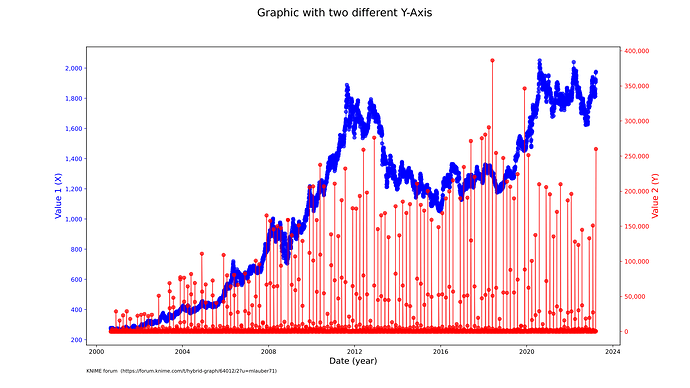@badger101 well I can only encourage you to give some Python code a try. Once you have established a framework (or you just take the examples I have provided) you can quickly adapt them. Then you can throw in some ChatGPT and you can handle a wide range of graphics. Like the sample you have provided:
With the help of a component you can now reuse this example for all such charts, and edit the description and also the colour of the axis (within reasonable limits). The axis should mostly adapt themselves.

